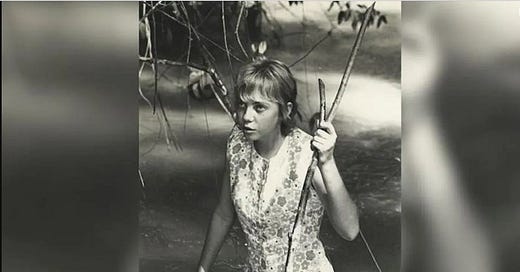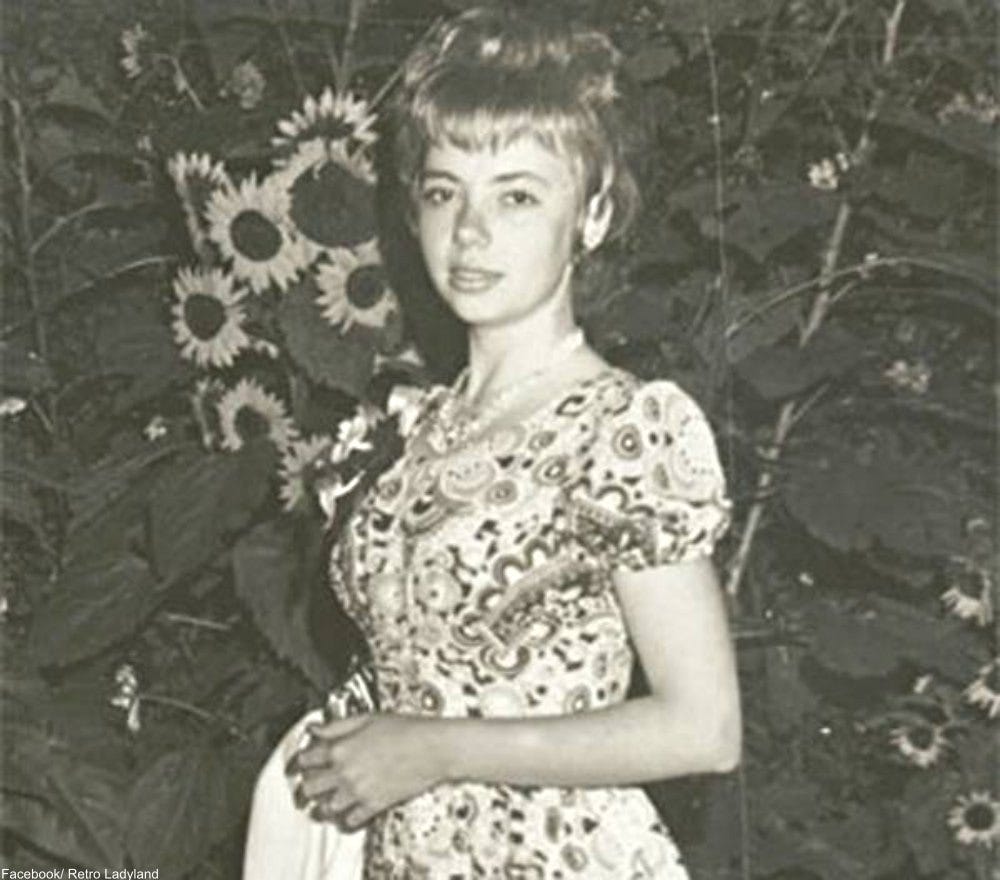Juliane Koepcke, the Girl Who Survived a 10,000 Feet Fall
Juliane Koepcke, a 17-year-old teenager, survived ten days alone in the Amazon rainforest after falling more than 10,000 feet during a plane crash.
The Miracle Girl
Juliane Koepcke told the BBC when she spoke about her ordeal in 2012.
"Suddenly, the noise stopped, and I was outside the plane. I was in a freefall, strapped to my seat bench and hanging head-over-heels. The whispering of the wind was the only noise I could hear."
On Christmas Eve, 1971, Juliane boarded LANSA Flight 508 with her mother and 84 other passengers. from Lima, Peru. The flight was scheduled to land in Pucallpa, Peru, but was struck by a stray bolt of lightning.
The plane went into a nosedive and broke into smithereens, and Juliane, who was still strapped to her seat, soon found herself ejected out of the plane, plummeting down in a freefall mode 10,000 feet into the Amazon jungle.
When she woke, she was alone in the Peruvian jungle without help or survivors.
In addition, she had a heavy concussion, a broken collarbone, deep cuts on her arm and leg, her left eye swollen shut, and her right eye partially swollen. As for any gear, she had next to nothing. She had lost her glasses and one shoe and was wearing a sleeveless mini-dress that did not protect snakes, spiders, and mosquitos.
Her chances of surviving the brutal jungle with her wounds and the animals all around were near zero. Yet she persisted, walking for ten days in the wilderness, avoiding piranhas, fighting deadly insects, bearing a painful maggot-infested wound, and starvation.
Finally, she came upon a small boat and a hut on a river. She dragged herself into the shed and fell unconscious. The next day a group of local Peruvian woodcutters found her and brought her to the next town.
She became an unlikely celebrity overnight, became known as the “miracle girl," and started receiving hundreds of letters from people she had never met. It was an extraordinary act of survival the world had never seen before.
Juliane said later about the unexpected stardom.
"It was so strange. Some letters addressed 'Juliane -- Peru,' but they still all found their way to me."
Juliane Koepcke’s Early Life in the Jungle
Juliane Koepcke was born in Lima, Peru, in 1954. She is the daughter of a world-renowned zoologist (Hans-Wilhelm) and an equally revered ornithologist (Maria).
Her parents were stationed in Panguana, a research station in the Amazon rainforest. They actively lobbied the government to protect the rainforest from hunting, deforestation, and illegal clearing.
Thus, young Juliane grew up well-versed in the internal working of a volatile, harsh Amazonian environment. Her parents taught her various survival tricks to stay alive in one of the world's most diverse and unforgiving environments. As she talks about her childhood days in a 2021 New York Times interview,
"I grew up understanding that nothing is really safe, not even the solid ground I walked on. The childhood memories have helped me, again and again, to keep cool even in difficult situations."
Little did she know that this knowledge would save her life.
The LANSA Flight 508 Disaster
Juliane remembers those horrifying moments when tongues of lightning surrounded the plane.
"When we saw those lightning bolts around the plane, I was scared. My mother and I held hands, but we were unable to speak. Other passengers began to cry and weep and scream."
That was when her mother had said very calmly: "That is the end. It's all over. "Those were the last words she heard from her as the plane nosedived and broke into pieces in mid-air.
It was pitch dark, and people were screaming, and Juliane found herself ejected out of the plane, plummeting in freefall mode 10,000 feet into the Amazon jungle.
When she woke up, she found herself alone in the Peruvian jungle teeming with animals, heavily injured and frightened. She had a broken collar bone, deep cuts on her arms and legs, and a torn knee ligament that made it difficult for her to walk.
Walking and Survival in the Jungle
If there was anything on her side, that was the training her parents gave. There were three basic survival lessons she learned from her zoologist father and ornithologist mother.
It is not the big animals but the insects, spiders, ants, flies, and mosquitoes that kill you.
Find a river. That is where you find humans living.
Do not be tempted to eat any fruit. That could be poisonous.
She followed their lessons to a tee. At the crash site, she found a small bag of sweets to be her only food for the next ten days. She found a creek and walked into the water as that was the 'safest' way to avoid getting bitten.
Sometimes she will find a crocodile approaching her, but she knew that crocodiles don’t attack unless provoked. It was sweltering and rained several times daily, and her mini dress was woefully inadequate for her situation. The wound on her upper arm had become septic, and soon it was infested by centimeter-long maggots. She was tired, in deep pain, and hallucinating, but she persisted.
On the fourth day, she found the bodies of three passengers rammed headfirst into the earth. It was a horrifying scene that still gave her nightmares. Luckily her mother was not one of them.
On the 10th day, following the creek, she finally came across a hut with a palm leaf roof, an outboard motor, and a liter of gasoline. She poured the gasoline over her maggot-infested wound, another lesson she had learned from her father. The pain was intense, but the maggots died. Dead tired, she dropped unconscious in the hut.
The next day, she was rescued by a group of Peruvian lumberjacks who took her to the nearest town and admitted her to a hospital. She was the sole survivor of the disastrous plane crash.
How Did She Survive?
Her unlikely survival has been the subject of much speculation.
Some say her seat belt helped her to mitigate the impact, and her life might have been saved due to the thunderstorm's updraft and the thick foliage she fell into.
Others say her training helped her to survive, although everybody admits that even the most experienced jungle trekker cannot survive the relentless Amazon jungle without any equipment or protection. Some even say her one-track mind of only focusing on getting help prevented her brain from getting fogged by fear or panic.
Whatever the reason, Juliane Koepcke's saga of extreme survival only teaches us one lesson; ultimately, our mental attitude determines our future. We all get beaten down and experience moments in our lives when everything appears lost. The key to surviving these moments is to plod on and on until we break through the dark clouds and reach our golden goal.
As Bruce Lee has aptly said,
"Remember, my friend, it is not what happens that count; it is how you react to them. Your mental attitude determines what you make of it—either a stepping stone or stumbling block."
Sources
· The Incredible Survival Story of Juliane Koepcke
· How teenager Juliane Koepcke survived a plane crash and solo 11-day trek out of the Amazon
· The Incredible Survival Story Of Juliane Koepcke And LANSA Flight 508









This is one of my favorite stories of all time and I’ve been thinking about it ever since I first saw Herzog’s documentary on it.
Good stuff Ravi. Thank you